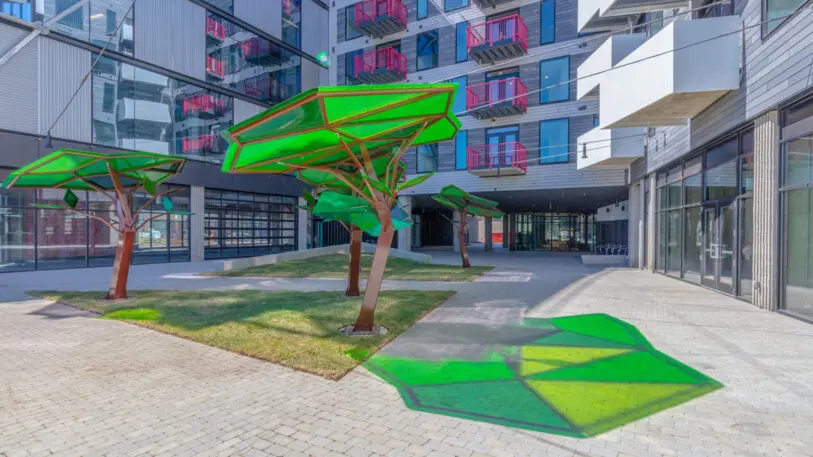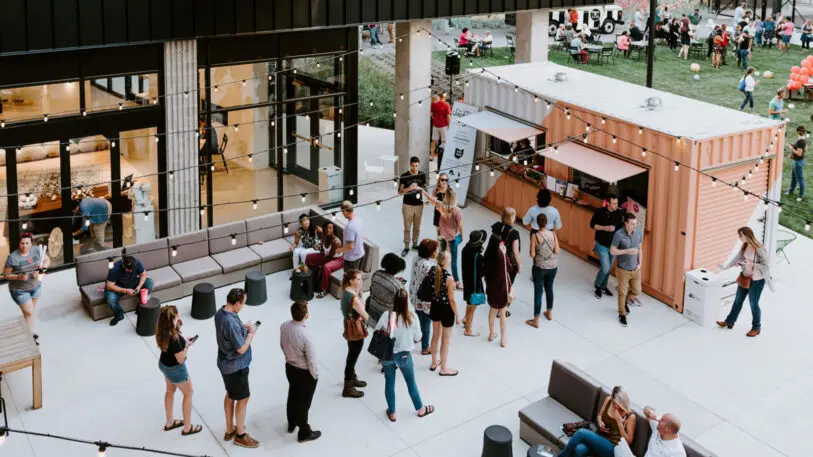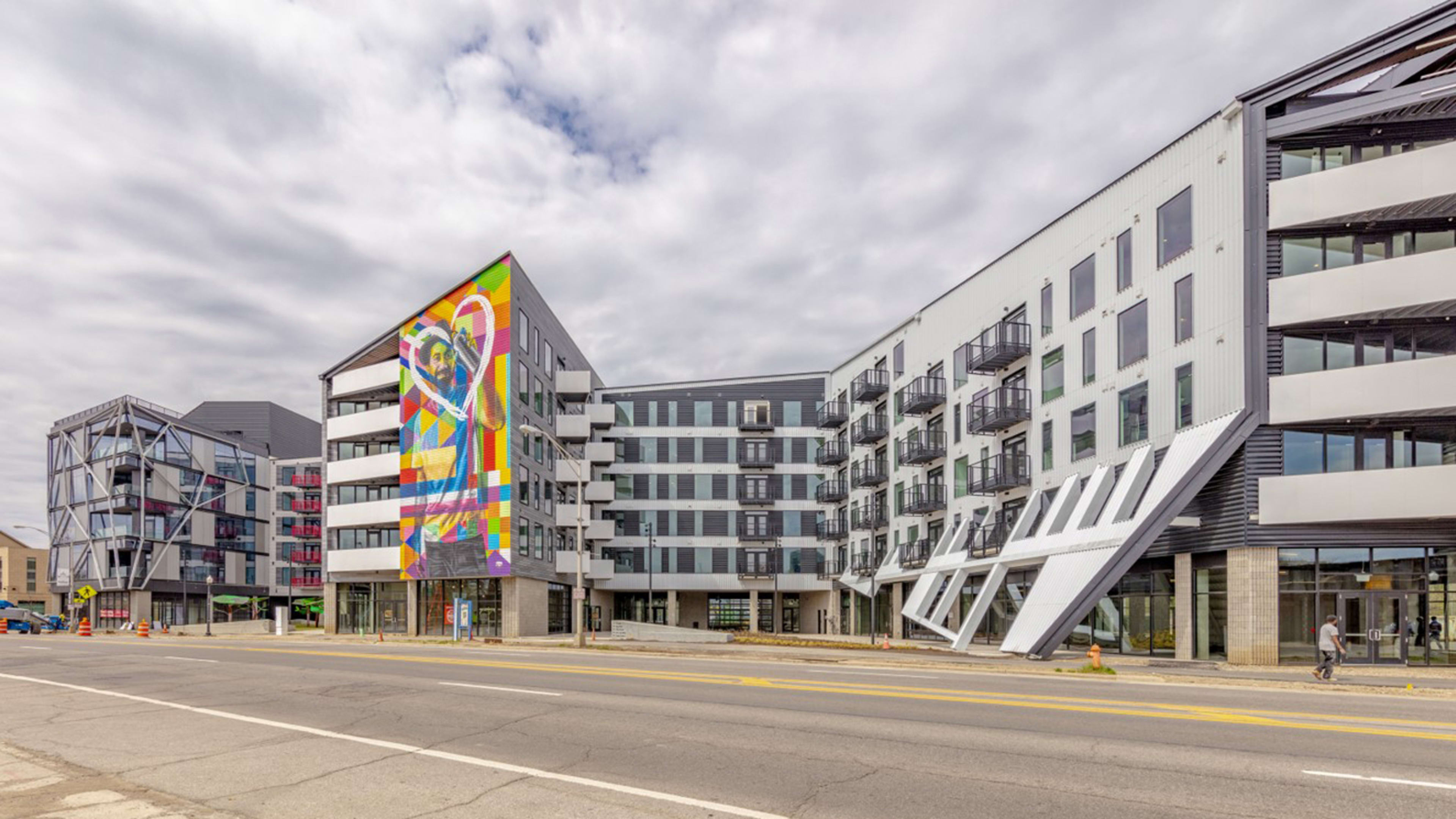For decades, residential developments have been built around hobbies. There are the Southern California apartment buildings with a pool in the courtyard, the Rocky Mountain getaways with ski-up connections to mountain lifts, and perhaps most ubiquitously, the retirement communities built around golf courses.
Developer Brett Kaufman knows these kinds of amenities work to draw in residents and tenants. That’s why he’s built a new project in Columbus, Ohio, with a specific kind of lifestyle in mind. Kaufman’s project is Gravity, a mixed-use community of residences, offices, and retail with an emphasis on mental health and wellness. There’s a transcendental meditation studio, a yoga studio, on-site mental health services, and spaces for therapy sessions. He calls it a “conscious community.”

The idea for Gravity came partly from Kaufman’s own experiences with meditation, but mostly from a frustration with the 15 years he’d spent working for a big housing developer. “I found myself pretty unhappy, pretty unfulfilled with my work,” he says. He launched his own development company in 2011, “with the idea that I can bring the things that I was passionate about in my life into my work, and I could create a company that would attract others that shared that desire,” he says.
After a series of smaller developments in his hometown of Columbus, Kaufman began planning Gravity as the real estate embodiment of a lifestyle focused on inner connectedness and mental well-being.
The first completed phase of Gravity includes 234 rental apartments priced at market and affordable rents, 50,000 square feet of offices, and 30,000 square feet of ground floor retail, in addition to the on-site wellness amenities and an event venue that hosts speakers and festivals.

Outside of Gravity’s wellness-oriented grounds, of course, is the rest of Columbus, Ohio, where the poverty rate is about 20%. Gravity is located in a downtown-adjacent community called Franklinton, one of the city’s oldest neighborhoods. Long a working-class area, the neighborhood has struggled with vacant homes, crime, and drug issues in recent years, and some residents worry that a project like Gravity will push prices up and lower-income residents out.
To reduce the risk of Gravity becoming a homogenous zone of yoga practitioners, Kaufman’s company partnered with the nonprofit housing developer Homeport to build a 50-unit affordable housing development within the site, which will be available to those making 60% of the area median income. In the next phase of the development, a coliving facility will have rents far below market rate, according to Kaufman.

“When I first started in the business, nobody was talking about wellness or meditation, yoga, composting, and a lot of these things. Even art. That wasn’t really a thing in the real estate world. It is now. And you know what, that’s a good thing,” he says. “If more people feel like they have to get on the wellness bandwagon and do something to be competitive, great.”
Gravity, Kaufman concedes, is a bit of an island in Columbus, offering lifestyle amenities people might associate more with California than Ohio. “What we’ve tried to do is really aggregate these like-minded people, people that were doing the work in this lane and pull them all together into a community, that you don’t have to travel to California to experience,” he says. “You can have that and live in Columbus, Ohio.”
Kaufman sees the project as offering an alternative—a new option for people in Columbus, and also a new way of thinking about what this type of development can do.
“We’re aiming, ultimately, at creating environments and experiences for our residents and tenants and anybody who engages in the community to be able to grow, to be able to learn, to be able to connect, to collaborate, to find ways to just feel better and maybe improve their lives,” he says.
Recognize your brand’s excellence by applying to this year’s Brands That Matter Awards before the early-rate deadline, May 3.
